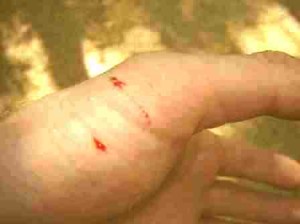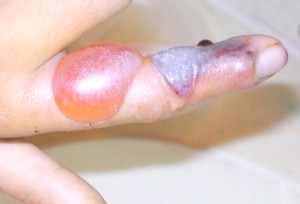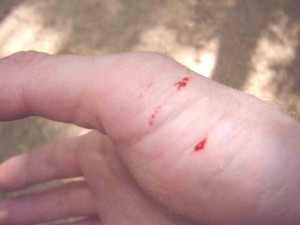Snakes are one of the most feared animals on earth and snakebite is obviously one of the dreaded and life threatening conditions. There are various sorts of snake remarkably successful on land, forest, water, mountains and almost everywhere. Despite the threatening impression posed, these mammals are actually scared of humans. Most snakes only attack humans if they feel provoked or endangered. Snakes are known to be cold blooded; hence they are not active in colder temperature but they are very active in temperature between 77 and 90 degree Fahrenheit.
Snake bite facts, statistics
Snakes eat meat and they survive on prey such as insects, birds, eggs, other reptiles as well as small animals like mouse. There are approximately 3000 species of snakes worldwide out of which only about 400 are known to be poisonous. In total there are approx 25 species of snake which are poisonous are found in North America. There are certain snake species which constricts their prey to death before eating. During this constriction the prey is suffocated due to the tight hold of the snake which enables the prey to breath and causes direct cardiac arrest. It is believed that snakes crush their prey before eating which is incorrect to certain extent. On the other hand there are snakes which hold tightly on their prey with their teeth and swallow them entirely.
How does the snake bite?
The snakebite which includes injection of venomous substance is scientifically referred to as envenomation. During the process of envenomation the venomous substances traverses through the venom gland and into the fangs of the snake and finally into the prey or host. Amazingly snakes also have the capability of regulating venom which means that they can decide whether to secret the venom in the prey or not and is yes then how much. Bites which do not contain any amount of venom are known as ‘dry bite’ and these bites are noticed in approximately 25% to 50% cases of snakebites. Among the various species of snakes approximately 25% of pit- viper bites are dry bite and around 50% of normal timid coral snake bites are dry.
Here are some categories in which this venomous substance can be divided:
• Cytotoxins are present in some snake bite which may cause damages to local tissues
• Hemotoxins when traversed through snake bite may led to internal bleeding
• Neurotoxins when passed during envenomation may significantly influence nervous system
• Cardiotoxins are harmful for heart
It is believed that snakebites are reported almost in every region of the world. There are approximately 20000 to 125000 deaths attributed to snake bites every year. Snakebites are comparatively frequent in topical region as well as places where agriculture is significant. The number of snakebites occurring in US is uncertain as records indicate around 7000 bites per year but some authors depicts a figure of around 45000 snake bites a year.
Symptoms of snakebites:
Since snakebites are venomous they may usually result in adverse physical symptoms. These symptoms may range form a conventional puncture or wound to fatal physical abnormality or even death. Initially there may be no symptoms experienced by the bitten individual but gradually sudden symptoms may develop and lead to respiratory issues and eventually lead to person into the sate of shock.
There are various symptoms of snake bites here are some of those common symptoms:
• Localized effects: Localized effects means symptoms noticed on the affected or bitten region. Bites of some bigger species of snakes are usually tender and painful. One may experience severely protruded and may also shown up blisters as well as bleeding. Venom traversed through cobra bite may also destroy tissues around the spot of bite.
• Bleeding: Viper bites and bites from some other snakes may also lead to damages to the hematologic system which in turn may lead to bleeding. Such bleeding can be either diffused or even localized. In such a case even the internal organs may get involved. A bitten individual may spontaneously bleed from mouth or other existing wounds or even the bite- penetrated skin region.
• Effects on the nervous system:
The influence on the nervous system of the affected individuals may be localized (close to the bitten spot) or it may also directly affect the entire nervous system of the body. For direct affect on the nervous system is usually in cases wherein bite traverses venom from elapids or snakes from sea. Unfortunately bites including cobra and mamba venom may quickly cease the functioning of breathing muscles and cause death with any treatment.
• Death of muscles:
There are some species of snake such as Russell’s viper etc which carries venom with the potential to cause direct death of muscles in simultaneously different regions of the body. One may also experience not so wide but localized death of muscles (necrosis) or even rhabdomyolysis which involves distant muscles. This may also lead to failure of kidney as the dead muscle debris may get clogged in the kidneys.
Spitting venom in the eyes
There are two known species of snake which are ringhals and spitting cobra, which can accurately spit their venom directly into the eye of the host. This may lead to instant eye pain and even eye damage.
These are some of the significant symptoms experienced due to snakebites however there also some other symptoms such as swelling, rashes, numbness etc which are experienced in most cases.
Treatment for snakebite
Even a nonvenomous snake bite may require good wound care treatment. Tetanus booster is one of the important medicines that help in treating almost any kinds of wounds. A tetanus injection should be taken once in every 5 years; however, some experts suggest taking tetanus in every six months. Also wash your wound with water and soap and inspect for broken teeth as well as any dirt. The best way to manage bit of snake is by consulting a certified doctor, the doctor may prescribed anti venin medicines and in severe cases the patient may have to rely on ventilator.
Snakebite myths
It is believed that cutting or sucking snake bitten region will help in eliminating the venom from the body which is wrong
• Using ice does not help in any way but it may cause frostbite
• Electric shock also does not help in treating the snakebite
• Do not apply alcohol as it may dilate the blood vessels and increase the rate of venom absorption
These are some myths which were and are followed to treat biters from snake. But these are not guaranteed but may infect lead to adverse effects. Hence, in case of snakebites it is essential to seek immediate medical attention.
Snake bite pictures
Check out snake bite pictures to see how the bite marks looks on skin


